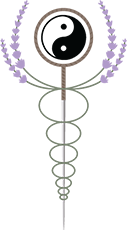Breakfast is the most important meal of the day, but unfortunately, we often make it the most unhealthy meal of the day. Book of Jook – A Healthy Alternative to the Typical Western Breakfast by Bob Flaws talks about problems and solutions surrounding breakfast, and in this blog post, I’m highlighting the most important points of the book for you.
Flaws starts out by explaining what the problem with breakfast in the Western culture is, why it’s a problem and which long-term issues it causes.

Generally, Western breakfast tends to fall into one of three categories (and most often is a combination of the three).
Breakfast is often:
- greasy/fatty – served are foods high in cholesterol, like bacon, sausage, and eggs.
- sweet/sugary – like sugar-coated cereals, syrups, donuts, sweet rolls, and fruit juice
- milk products (cold and warm) – served over cereal, or as yoghurt, and even hot chocolate drinks
Each of those categories comes with its own set of problems for your health: excess dietary fat and cholesterol are bad for your heart and arteries, and they weaken your immune system. The added stress on the body (and “stress” is exactly what a weakened immune system means for your body) causes it to produce more cholesterol.
Excess sugars can cause both hypoglycemia and hyperglycemia (diabetes), and also put added stress on the adrenal glands, thus further weakening the immune system. Sugars also need large quantities of vitamins, minerals, and certain proteins in order to metabolize. As a result, sugar both increases body weight while at the same time leaving you in an overall state of malnourishment. Sugar is also the food source for yeasts and fungi in our intestines. This will result in an increase of these organisms in the body, a condition called candidiasis. Candidiasis is linked to allergies, autoimmune disorders, and the development/progression of many chronic illnesses such as multiple sclerosis, lupus, rheumatoid arthritis, AIDS, cancer, chronic fatigue syndrome, and more.
The ingestion of milk products also comes with a set of possible problems: the majority of the population stops producing the enzyme necessary for digesting milk, once they have been weaned from breast milk as an infant. The inability to properly digest dairy products can lead to the production of mucus in the body as a result.
After giving an insight into the fundamentals and the issues that can arise from making the first meal of the day an unhealthy one, Flaws explains how Traditional Chinese Medicine looks at digestion.
In TCM the stomach is analogous to a large pot on a stove. Foods and liquids enter the stomach, where they get turned into a 38 degree (Celsius) soup. No further digestion can take place until this has occurred. It’s known as the “ripening and rotting” of food. A pot needs heat to cook, and the fire under this pot is the TCM Spleen. Spleen Qi transforms the soup, separating the pure essence from the dregs, sending it upward to the heart and lungs. There it becomes Qi and blood to nourish the body. Once the Qi is extracted, the stomach then sends the impure turbid dregs downward for excretion as either urine or feces.
Since digestion begins by turning all foods and liquids into a 38 C soup in the stomach, the closer the food is to body temperature at time of ingestion, the more easily it can be digested. Put simply: cold and raw foods are less digestible. Foods should be consumed at roughly body temperature for easiest, most complete digestion – and cooking food is the first step towards digestion. It’s also important to chew well, which aids in the “rotting and ripening” process; enough liquids in the stomach are also important, to make “soup” – but not too much and especially not too cold, as to douse the “fire” under the pot.
In my next blog post I will talk about the solutions TCM has to offer for the “breakfast dilemma” – until then I’d love to hear your thoughts about this! Connect with me on Facebook for more info on holistic wellness for body, mind, and soul, or contact me and join the conversation there!

